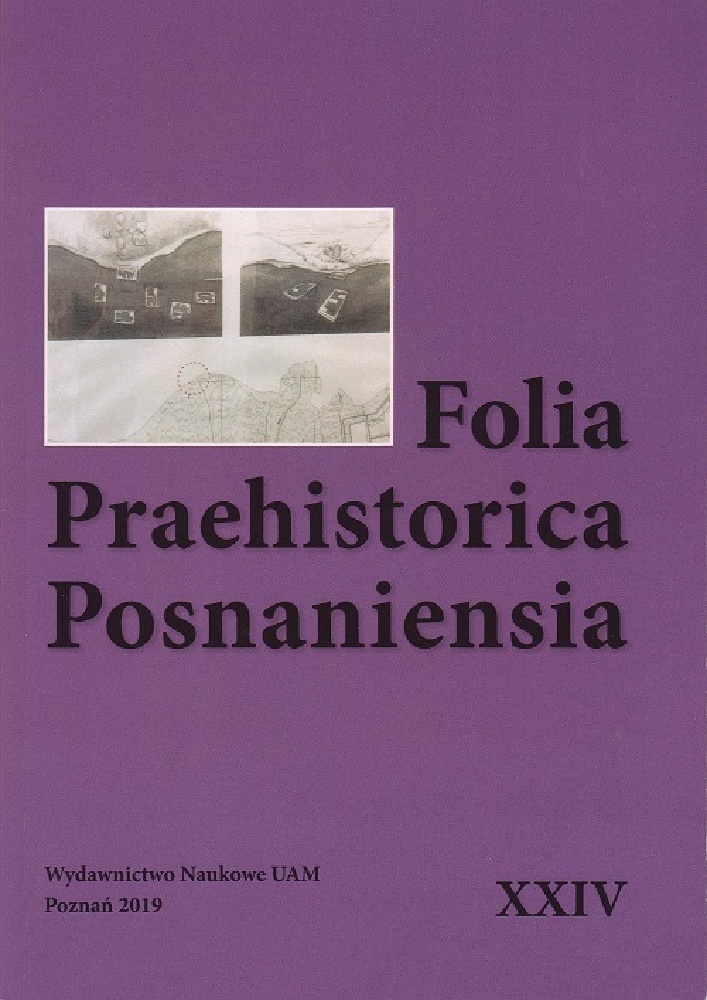Abstract
The article is devoted to the function of the primordial art in the pragmatic concept. The pragmatism ennobles the unprofessional forms of artistic activity. It makes it following the deconstruction of the modern definitions of the art. It presents the aesthetic values of primordial art. In the article, there are included its characteristics made by J. Dewey and É. Durkheim who used the first ethnographic data. Their description of the Australian autochthones shows its social contexts. It served to intensify certain emotions. It was the art of movement and dynamics. It harmonized with the whole experience of the life of the primordial hunters. It did not operate on symbols as understand these days. The pragmatic approach makes the aesthetic notion of the manufacture more important than its cognitive aspects. It does not eliminate the dilemmas of the character of the art in the cultures beyond Europe. It does not give archaeologists any simple tool to interpret the prehistoric facts.
References
Berndt, R. M., 1958 Some Methodological Considerations in the Study of Australian Aboriginal Art. Oceania, 29(1), 99–126.
Bugaj, E., 2003 Problemy interpretacji zjawisk sztuki w archeologii w kontekście nieoczywistości sztuki. W: B. Gediga, A. P. Kowalski (red.), Estetyka w archeologii (s. 11–20). Gdańsk: Muzeum Archeologiczne w Gdańsku.
Dewey, J., 1902 Interpretation of Savage Mind. The Psychological Review, 9(3), 217–230.
Dewey, J., 1929 Experience and Nature. London: George Allen and Unwin. Ltd.
Dewey, J., 1975 Sztuka jako doświadczenie. Warszawa: Ossolineum.
Durkheim, E., 1990 Elementarne formy życia religijnego. System totemiczny w Australii. Warszawa: PWN.
Fallace, Th. D., 2008 John Dewey and the Savage Mind. Uniting Anthropological, Psychological, and Pedagogical Thought, 1894–1902. Journal of the Behavioral Sciences, 44(8), 335–349.
Errington, S., 1994 What Became Authentic Primitive Art? Cultural Anthropology, 9(2), 201–226.
Lewis, P. H., 1961 A Definition of Primitive Art. Fieldiana Anthropology, 36(10), 221–241.
Majewski, E., 1923 Nauka o cywilizacji, t. 4: Narodziny i rozwój ducha na ziemi. Warszawa: Gebethner i Wolff.
Morphy, H., 1996 Aboriginal Art in a Global Context. W: D. Miller (red.), Worlds Apart. Modernity through the Prism of the Local (s. 211–239). London: Routledge.
Płonka, T., 2012 Kultura symboliczna społeczeństw zbieracko-łowieckich środkowej Europy u schyłku paleolitu. Wrocław: Wydawnictwo Uniwersytetu Wrocławskiego.
Schneider, H. K., 1971 The Interpretation of Pakot Visual Art. W: G. F. Jopling (red.), Art and Aesthetics in Primitive Society. A Critical Anthology (s. 55–63). New York: Dutton.
Shusterman, R., 1998 Estetyka pragmatyczna. Żywe piękno i refleksja nad sztuką. Wrocław: Aureus.
Shusterman, R., 2005 Praktyki filozofii, filozofia praktyki. Pragmatyzm a życie filozoficzne. Kraków: Universitas.
Torgovnick, M., 1989 Making Primitive Art Hight Art. Poetics Today, 10(2), 299–328.
Wyschogrod, E., 1981 The Logic of Artifactual Existents: John Dewey and Claude Lévi-Strauss. Man and World, 14(3), 235–250.
Żelazny, M., 1994 Źródłowy sens pojęcia estetyka. Rozprawy z historii estetyki niemieckiej. Toruń: Wydawnictwo Uniwersytetu Mikołaja Kopernika.

